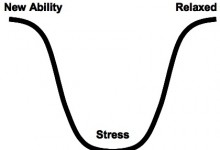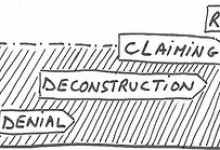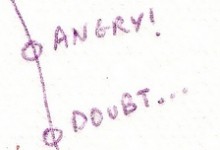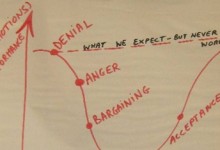Elisabeth Kübler-Ross, M.D. (1926 2004) was a Swiss-born psychiatrist and the author of the groundbreaking book On Death and Dying, where she first discussed what is now known as the Kübler-Ross model.
Elisabeth Kübler-Ross

Getting Serious about Community Development (Part 16)
The one thing that determines the success of a change is a tapestry composed of a 1000 hands.
Quote
People are like stained-glass windows. They sparkle and shine when the sun is out, but when the darkness sets in, their true beauty is revealed only if there is a light from within.
On Life and Birthing
Beauty is in the eye of the beholder. Instead of evaluating a change situation from a ‘Death and Dying’ perspective, I would suggest to look at it from the ‘Life and Birthing’ perspective.
Twitter Learning Stages
This cool info-graphic shows the different stages of adoption people go through using Twitter. I think it is appropriate for a lot of social media tools.
The How of Ownership
Have you ever tried to make someone in your organization the owner of a project or an initiative? How about propelling someone into a new position? Ownership is the road less traveled.
Finding a better way to grieve : The New Yorker
A great article on the grieving process and the “stages” approach of Kübler-Ross, who stated that dying underwent five stages: denial, anger, bargaining, depression, and acceptance.
Creativity as a Resistance Buster
The way I approach resistance is influenced by the way I look at organizational change management. I see resistance as a crucial ingredient that is needed to make a change happen. Resistance fuels change. Without it, there is no change.
Elephants! Everywhere I look!
Forget the cheese and the mice, organizational change management just entered a new era: that of elephants and riders. The Heath brothers published a ground-breaking book on our core business.
Three is the Magic Number
“All good things come in threes” – that is my way of saying that I can not cope with more things at the same time. So I tend to reduce reality to a maximum of three dimensions.
What on Earth are we Communicating for?
What should be the result of successful communication? In this article I am building further on earlier insights about the format and the quantity of communication. Now it is time to dive into the qualitative aspect.











